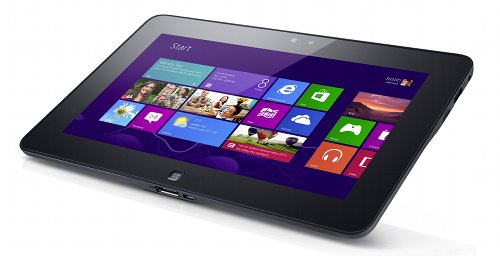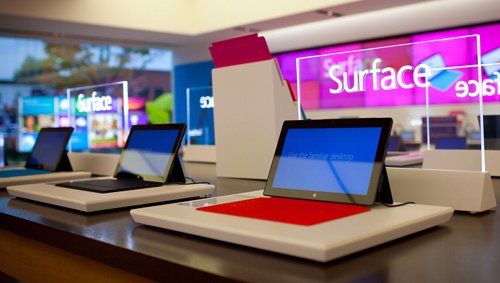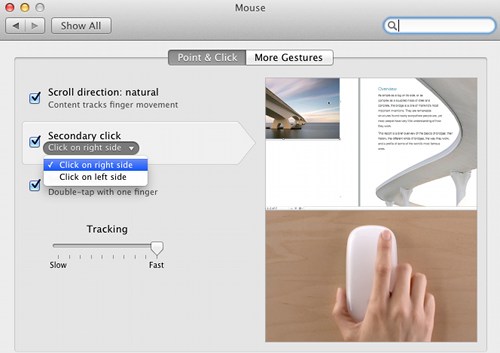Posts for December 2012
Merry Christmas from IT Donut
How has 2012 been for your business? Have you embraced the cloud and seen your business prospects soar as a result? Or are you still debating whether your company can really benefit from tablet computers?
It's been quite a year for our family of Donut websites. Marketing Donut, Start up Donut, IT Donut, Law Donut and Tax Donut have continued to grow in popularity, and we have exciting plans for 2013.
But looking back over the last 12 months, it's clear we've seen some big changes in the world of business IT. And those changes will probably continue into 2013.
Mobile is big, and it's getting bigger. As the number of people using their smart phones and tablets to access the internet grows, companies that sell online must make sure their websites work properly on mobile devices.
The shift to mobile is happening inside organisations too. Increasingly, mobile workers are being equpped with tablets and smart phones, using cloud computing and apps to access company information and work on the move.
There's no sign this trend will reverse - or even slow down - in 2013. If anything, expect the emergence of 4G connections and faster broadband to drive an even greater shift towards mobile working.
But before then, we're taking a few days off to relax, recharge and enjoy the Christmas break. Now is a great time to reflect on the events of the last year and think about what you want to achieve in 2013.
If you're planning to do a little work over the Christmas period, it's a good time to do some routine maintenance and get your IT in first class condition for next year. And if you're heading off this afternoon, don't forget to shut everything down and share contact details in case anything goes wrong with your website over the Christmas break.
Merry Christmas! We'll be back posting regularly in January.
What does 2013 hold for mobile computing?

The next few months are going to be interesting for the world of mobile computing.
Take the smart phone market. Although Android-based phones have a 62.5% market share in the UK, it's Apple that makes most of the money. Some figures suggest the tech giant takes over 75% of the industry's total profits.
Dell shifts focus
It's all persuaded PC giant Dell to pull out of the smart phone business altogether. It thinks the best way to make an impact in the mobile computing world is to focus on Windows-based tablets.
It's a move that seems to make sense, as the firm's smart phones were generally overshadowed by manufacturers like Samsung, HTC and Apple.
Dell still makes a good proportion of the world's business computers though. If it can find a way to move those customers on to its tablets, maybe it could mount a challenge in 2013.
What about Microsoft?
Then there's Microsoft, of course, which hopes to have sown the seeds for its own mobile success in 2013.
Its latest operating system is Windows 8, and it's designed to provide a near-seamless computing experience across desktop and laptop computers, tablets and smart phones. If its Surface tablet can overcome some initial criticisms, it could make a splash.
What does all this mean for your business? Well, choosing a tablet isn't about to get easier. If anything, the raft of competing models will mean you have to spend a little longer figuring out which is right for you.
But at the same time, it's likely the increased competition will spark new ideas and innovation in the world of mobile computing. Flexible phones? Wearable computers? Watch this space...
TOTW: how to get ready for the Christmas break

Christmas lights image: George Deputee on Flickr.
We've reached that point in December where people's minds are turning away from work. The secret Santa gifts have been opened, and staff are heading off for the great Christmas getaway.
But before you shut everything down and close the office for Christmas, here are a few things to remember:
1. Turn everything off
If your premises are going to be closed over Christmas, shut down and turn off all equipment that you can. There's no point in consuming energy unnecessarily, and switching things off lessens the chance of a fault occuring while nobody's there to fix it.
2. Double-check your security
Christmas is a prime time for thieves, so make sure you secure your premises properly. If a skeleton staff will be sticking around, make sure they know what should be locked up and how to operate the alarm.
3. Circulate essential contacts
Make sure anyone who is working in your business over Christmas knows who to contact if they have a problem. Remember to check when your IT support firm is open for business, too.
4. Watch your website
If you sell online, remember that Boxing Day is one of the biggest online shopping days of the year. If your site goes down, you could lose significant business, so make sure you're monitoring for problems and know who to contact to get them fixed.
5. Change your passwords
If your network passwords expire after a set period of time, advise your staff to change them now. That way you shouldn't have to deal with any password issues on the first day back.
Sticking around? Take advantage of quiet timeThe holiday season is an excellent time to take care of IT maintenance tasks that would otherwise interrupt people's work. For instance, over Christmas you could run a deep scan for viruses and malware, install software updates and restart all your servers. |
Has Microsoft Surface won the laptop vs. tablet debate?

Small businesses traditionally stick with laptops, does Microsoft Surface mean they’ll now get the benefits of tablets too?
Tablets have really taken off in the past couple of years, with all of the major computer brands now in the market. Apple recently released its iPad Mini, and a number of other manufacturers have really upped their game.
Laptop or tablet?
The debate rages over whether these new tablets or traditional laptops are better for business. The real solution however, could lie with Microsoft’s new Surface: a tablet with laptop power and capabilities.
The overall consensus has been that tablets are best suited to displaying or digesting information, whereas laptops are better for business applications. The intrinsic tactility of a tablet suits it to presentation, while the superior power and setup of a laptop suits it to actual work.
Surface Pro then, the forthcoming model that runs the full version of Windows 8 (don't get it confused with the Surface RT, reviewed recently on this blog), is a hybrid of sorts.
It can be used as a sleek and attractive tablet, ideal for passing round a boardroom. But attach the keyboard and it should be a more effective workstation than any other tablet can hope to be.
Your business apps, anywhere
Fans of laptops will be pleased to see that Surface Pro will come equipped with an Intel i5 processor; a mid-level central processing unit that you’ll find in many modern laptops.
It will mean the Surface should be capable of handling a raft of traditional Windows software with ease, which is something most tablets can’t currently do. The clip-on keyboard is proving very popular, as it instantly turns the tablet into a workstation.
However, the real benefit of having a Windows operating system is, of course, that all your usual software should work on Surface Pro too.
Surface criticisms
Criticisms of the Surface are mainly aimed at its tablet aspects. For instance, reviews have suggested Surface is not as capable of displaying information attractively as rivals such as the iPad.
If you’re looking to impress clients, it seems that the offerings from Apple are a better choice. This is partly down to screen quality and Apple's slick interface.
The other criticism is the price. In particular, refurbished laptops offer a lot more power in terms of relative cost. If you’re looking to issue several members of staff with a computer, a laptop is by far the most cost effective option.
In conclusion, it appears the debate is far from over. Surface is a go-between, but it is not as good as either a tablet or a laptop for their respective specialities. The decision of which to buy probably relies on what you’re going to be using the computer for.
If you have a desktop and just need something to present information to customers on, then a tablet is best. If you need to be able to work on the go, then a laptop is probably essential. For something in between, Surface may do nicely.
Surface Pro will be available to buy from Microsoft from January. The price is expected to be around £700.
- Should you buy a Microsoft Surface?
- Windows 8 to spark tablet war?
- Now is when the tablet comes of age for business
Adam Hart-Davies is a computer enthusiast who writes on behalf of SCH Trade, who supply excellent value refurbished laptops.
Could you survive a denial of service attack?
Distributed denial of service attack. DDoS for short. Four letters that are can strike terror into the heart of anyone who's been on the receiving end of one.
Overwhelming a website
DDoS attacks aim to take websites offline by overwhelming them with requests for information. Typically, they involve hundreds or thousands of computers, all coordinated to bombard the site simultaneously.
Often, the owners of these computers don't even know what's going on, because the source of the attack is malware that's infected their machines.
DDoS attacks have hit the news regularly in 2012. Last month, Teresa May and the Home Office were targeted. Back in May, Webfusion - one of the UK's largest web hosts - was on the receiving end of a sustained attack (the firm produced an interesting white paper explaining what happened).
Other victims have included Virgin Media, WikiLeaks, HSBC and Amazon.
DDoS - not just big brands
The motives for DDoS attacks vary. Sometimes they're random. Sometimes they're political. But there's often a financial aspect. They can come from your competitors, or they can be blackmail, pure and simple. Pay up, or your website stays offline.
And although it's only big name brands that hit the news, online criminals are increasingly turning their attention to smaller companies. Without the resources to deflect attacks, they're softer targets.
As security expert Don Smith told us recently:
"More and more smaller companies are being attacked by cyber criminals, yet many still hold the view that they are too small to be targeted."
Web hosting and DDoS
If you're not prepared, combating a DDoS attack can be tricky. When your website's overwhelmed by spurious traffic, you may find you're unable to even log in yourself.
In fact, the possibility of a DDoS attack is something you should consider when choosing a web host, because the way they handle them can vary remarkably.
Get the right hosting
Some hosting companies will simply take your website offline completely so that their other customers aren't affected. Worse, you might get a bill for the extra traffic the attack generated.
Other web hosts will provide far more constructive assistance. Ask if they can give you examples of how they've fended off attacks in the past, and look for security features that come as part of your package, like DDoS protection.
Also make sure they keep their servers and apps up-to-date, because often the latest versions of ecommerce and content management tools are more resistant to DDoS attacks.
Looking for a new web hosting firm?Here are some firms you might like to consider: |
Have you ever suffered a DDoS attack? How did you cope?
Up in the clouds - how CRM and IT are going asset-free
 Whether you call it cloud software, or SaaS (software as a service), the premise is the same – your customer relationship management (CRM) system is accessible online, 24 hours a day, 7 days a week, from any computer, using a secure login.
Whether you call it cloud software, or SaaS (software as a service), the premise is the same – your customer relationship management (CRM) system is accessible online, 24 hours a day, 7 days a week, from any computer, using a secure login.
We have moved away from the fear of holding our data online, and are gradually moving towards total acceptance of the cloud as a way to increase efficiency and deliver CRM systems.
Indeed, 20% of businesses will own no IT assets by next year, according to research carried out by Gartner last year. They declared 85% of those surveyed would increase their use of SaaS or cloud technology over the next three years.
And when Microsoft say they’re ‘all in’, that means it’s cloud or nothing. On-site IT is on the way out within the next five years.
It’s a cloud war
You could call it a ‘cloud war’ with Salesforce and Microsoft Dynamics CRM going head to head and Oracle entering the fray with Oracle Public Cloud.
The drive towards cloud services doesn’t just benefit the end user – it benefits the providers, too. It’s win-win, because it gives the providers greater room for investment in their technology. What’s more, it’s competitive, ensuring cloud technology is developing faster than any other.
So what are the main drivers for uptake of cloud CRM services? Why are people switching now and not when they are forced to?
It always involves cost
We are moving towards a new IT world – one in which assets are not held within a business, but by the provider, and supplied online.
It’s not just happening in CRM, it’s happening in HR, email, accounting … even music – when’s the last time you bought a CD? There are online services that hold almost every song ever recorded. They’re part of the cloud too.
This CRM world where everything is hosted online provides huge savings for businesses – not just in the upfront cost of the service (which is always lower than on-site), but in the ongoing maintenance of the system, and in the deployment of an internal IT team.
So yes, cost is a driver. It always has been, and it always will be. Cloud CRM is, put simply, cheaper to implement and cheaper to maintain.
Make it easy and they’ll use it
Within your business, everyone needs a reason to use CRM, otherwise any CRM project will be dead in the water. However, alongside that reason, simple, easy access is a must.
Nobody wants to spend five minutes trying to log on to a system that they can only ever access from their work computer. After all, the reality is that the workforce is becoming more fragmented, with remote and flexible working becoming more popular.
Cloud CRM is, if anything, a reaction to changes in the workplace that are happening right now. Indeed, it’s a reaction to the many changes that are happening with the ways in which we interact with technology.
We want everything right here, right now, wherever we are. Cloud CRM brings that attitude into the workplace, and increased uptake is therefore almost a given. Make it easy, and you remove barriers.
Integration is key
Microsoft Dynamics is a good example of why integration works well. This CRM product links into Microsoft Office, allowing you to share documents through libraries.
A successful CRM system should never operate in isolation. It needs to be part of an overall business cloud strategy – one that is driven by someone who has an overview of all your business departments and strategies.
Equally, the integration of external data such as billing means your cloud CRM is perfectly placed to act as the fulcrum around which your customer intelligence revolves.
Keep it flexible and scalable
If we have learned one thing from the last five years of financial difficulty, it is that flexibility and scalability have to be built into everything we do
The pre-2007 years of spend, spend, spend are a distant dream – we have all become experts at sourcing flexible, scalable solutions that allow us to maximise our spend. Cloud CRM meets that demand.
Businesses can start with an initial project team on SaaS, and expand their user base more quickly than with on-premise systems, which incur a fixed cost. The pay-as-you-go nature of cloud CRM means that businesses pay for what they get, and in this environment of austerity, this is a message that resonates well.
So – we’re going asset-free, we’re going online and we’re saving money and driving uptake. That’s not a lot unlike us, at home, in other environments such as music provision or even the shift from DVD to online delivery of movies.
The only surprise is that it has taken us so long to shake off our hesitancy and take the plunge into cloud, where everyone wins.
- Cloud computing and hosted services
- Cloud computing: a new horizon for small firms
- Are you ready for cloud computing?
Gareth Cartman is a business blogger with a particular interest in direct & digital marketing, data marketing and outsourcing.
Now you can get hardware as a service too

Hardware as a service - just pay for what you use? (Image: William Clifford on Flickr)
The term software as a service (SaaS) is often used to describe cloud computing, where you pay a monthly charge to use software instead of making a one-off purchase. Businesses commonly use software as a service for things like business accounting and customer relationship management.
Now news has reached us that IT support firm Inbay has decided to offer hardware as a service (HaaS). The company claims it will free businesses from the burden of capital investment in IT by wrapping hardware, software, labour and support into a monthly fee-based package.
Everything by the month
In short, you can pay by the month for virtually all your business IT. This model could be particularly attractive to companies which need new IT equipment but can't afford to invest a lump sum. It also shifts more of your IT costs into your operating expenses, which - for most businesses - are wholly tax deductable.
One monthly payment, all your IT sorted. Sounds good, right?
Well, there are some possible drawbacks, the most significant of which is the potential for loss of control. With a single IT supplier to deal with, you always know exactly who to call when you need help or something goes wrong. But you also have to place complete faith in them.
You don't own anything
What's more, hardware as a service raises the prospect that your business could own virtually none of its IT. Effectively, you rent your computers, servers and other equipment. Perfectly fine, as long as you keep up the payments. But what happens if your IT supplier runs into difficulties of its own?
Hardware as a service is certainly worthy of consideration if your business is considering an investment in new IT. But as with any other big purchasing decision, take your time evaluating different options and find a supplier you're comfortable working with.
John McGarvey is editor of the IT Donut
To learn more about hardware as a service, you can download a free white paper from Inbay.
TOTW: make your Google account more secure

If you're anything like me, you probably rely heavily on Google services. Gmail has nearly half a billion users, and five million businesses use Google Apps, the company's online email, calendar and document tools.
But if you have valuable documents and important emails sitting in your Google account, you might want to protect it with more than just a password. As Wired writer Mat Honan found to his cost, it's not always difficult for a hacker to break into your account.
The best way to protect your account is to set up two-step verification. This means that in order to log in, you have to enter a code sent to your mobile phone as well as your password. Without access to your mobile, a hacker will find it virtually impossible to break in.
Here's how to set it up. To start, make sure you're sign in to your Google account, then:
- Go to your account settings. You can either click your profile picture at the top right of your screen, then click Account, or just follow this link straight to the settings page.
- Click the Security link on the left side of your screen.
- Look for the 2-step verification heading, then click the Settings button here.
- You'll see a screen explaining how two-step verification works. Read it before continuing.
- Once you're ready, click the Start setup button. Google will ask for your password again. Enter it and click Sign in.
- Enter your mobile number into the Phone number box and choose whether you want Google to send your codes as text messages or voice calls. Text messages are usually easier.
- Click the Send code button.
- Google will send a code to your phone. Enter it when requested and click Verify.
- If you're using your normal computer, leave the Trust this computer box ticked, then click Next.
- Click Confirm to turn on two-step verification.
That's it - Google will now send a code to your mobile when you sign in to your Google account. If you chose to trust the computer, Google will only ask for the code on this computer once a month, not every time you log in. If you log in from a different computer, you'll still need to enter a code.
It's worth taking some time to read the information on the confirmation screen, as you can print out backup codes to use in case you lose your phone or don't have it handy when you need to log in. You can also add an alternative phone number, just in case anything happens to your mobile.
Two-step verification is a really good way to make it much harder for hackers to brak into your Google account. It's well worth setting up, and once it's up-and-running the extra inconvenience when logging in is minimal.
Finding the cloud's silver lining

Image: Kylir on Flickr
Cloud computing has been a buzzword for quite some time, promising efficiency and cost savings. But what is the reality of how businesses use the cloud? How far have they come in terms of cloud adoption, and what are they looking to do in the future? Lee Wade, CEO of Exponential-e, shares his views
The pace of technological change - which has always been rapid - seems even faster in the world of cloud computing. It's hard enough to stay abreast of the latest cloud developments, let alone ensure that the systems you invest in are robust enough to support the growing demands of your business.
The cloud's bottom line
We recently announced research which revealed businesses clearly recognise the benefits cloud services can have on their bottom line.
For example, of the 79% of businesses which currently use cloud services, 84% see them as key to increasing productivity. However, for 56% of respondents, cloud security is a major reason for not adopting more cloud services. A lack of in-house skills (17%) and inadequate network connections (19%) also hold companies back.
Cloud services can save organisations time and money, but if their internet connections and company networks are not robust, moving to the could could lead to greater downtime and larger costs.
Increasing cloud dependence
As UK businesses increase their dependence on cloud services, they cannot afford to be offline for a second. Moments of downtime can translate into hundreds or thousands of pounds in lost revenue. For companies in spheres such as financial services, downtime can also result in regulatory infringement.
Many companies fear their internet connection is the weak point, and unfortunately the statistics support this. Of the organisations questioned, 23% had experienced a significant number of unplanned connectivity outages in the last year.
Over a quarter (27%) said that they had experienced more than 12 hours of downtime in a year. The impact can be severe: 58% of unplanned connectivity outages affected business workflow, suggesting that the failures were felt across business areas.
Stakes are high in the cloud
The stakes are high for businesses considering a move to the cloud. Yet I am always surprised by the number of companies which still consider their standard internet connection to be good enough, even it can render them susceptible to data security breaches and their provider may make no guarantees about connection speed or availability.
An alternative is to move critical business services to the private cloud. This gives a business its own cloud servers - not shared with any other organisations - with a robust, reliable private connection.
Just as importantly, any organisation looking at moving services to the cloud needs to find a way to assess the plethora of cloud service providers. Key factors to consider include: are they a trusted supplier, do they provide a valuable service level agreement (SLA) and is the network used to access the cloud robust and secure?
Mobile commerce: what you need to know
 Between summer 2011 and summer 2012, traffic to ecommerce sites from smart phones and tablets grew by up to 200%. Warren Knight, CEO and co-founder of social sharing and ecommerce platform Gloople, explains why mobile commerce is becoming more important every day.
Between summer 2011 and summer 2012, traffic to ecommerce sites from smart phones and tablets grew by up to 200%. Warren Knight, CEO and co-founder of social sharing and ecommerce platform Gloople, explains why mobile commerce is becoming more important every day.
Catering for mobile shoppers
I was recently with a new client who sells men's clothing. The first thing I helped them with was to understand their online customers through Google Analytics. To their surprise, not only had they seen a massive increase in mobile and tablet visitors and customers, but mobile customers were spending 10% more than other customers.
This is definitely not an anomaly. It's something I've seen time and time again. It's time to pay attention.
The big turnoff
The biggest turnoff for mobile shoppers is the difficult customer acquisition journey. This is the step by step process a website visitor goes through in order to purchase a product.
Some online stores lose sales because their website is either archaic or non-responsive, meaning that the journey of purchasing a product is intolerable. The result is that visitors leave the website without purchasing anything.
To solve this problem you can either build a responsive website design or create a mobile app.
Changing purchase habits
The way people purchase goods has changed since the days of going to a store and paying cash for it. Don’t get me wrong - in-store shopping is still leading in sales. However, most people will no longer drive hours to a shop just to find that what they want no longer exists.
There's been a big shift towards online shopping, and mobile commerce is the next logical progression. Indeed, eBay alone has 300 - 400 employees working on mobile solutions, with the company expecting to rack up mobile sales worth $10bn in 2012.
Mobile devices are becoming a central part of our lives and should be used as tools to help us shop and pay. With most mobile phones now coming with either 3G, 4G or the ability to connect via a wireless network, there is no excuse in avoiding the inevitable. Mobile commerce is the future.
The future of the cloud - is it right for you?
 There has been no shortage of analysis of the cloud, and the business benefits it can bring. Unsurprisingly for an emerging technology, there has been a great deal of confusion about what it is and how businesses can use it.
There has been no shortage of analysis of the cloud, and the business benefits it can bring. Unsurprisingly for an emerging technology, there has been a great deal of confusion about what it is and how businesses can use it.
The uptake of cloud computing has even been slow among smaller businesses, which traditionally tend to be quicker to adopt new technologies. One piece of research found only 9% of small and medium-sized businesses were using the cloud at the end of 2011.
I think this is set to change and change dramatically. Our research found that one in four small businesses are transforming the way they work by embracing the cloud. Nearly half of these firms started using online software to run their business in the past 12 months.
The adoption of cloud technology amongst small businesses is really starting to gain momentum – something we have seen with our own cloud software. Reduced spending, more efficient use of time and the ability to stay connected regardless of location are factors that can improve business productivity, performance and - ultimately - stability and growth.
However, although adoption is increasing, confusion still exists. Many of our customers have needed advice about how to move services over into the cloud, and help to understand how it can best benefit their business.
If your business is considering a move to the cloud, here's my layman’s guide to what to think about before making the transition:
- There is no ‘one cloud fits all’ solution. Speak to experts who can help you understand how best to use the cloud and get advice on how best to implement the technology in different parts of your business. Analyse the risks and rewards involved, and the resources and support needed to deliver a smooth transition.
- Identify what existing services can benefit from the cloud. For example, should you focus on your file and email servers, storage systems and databases, office applications, or finance and accounting?
- Invest in your technology. Can your existing services handle the move? Is your internet connection fast enough? Have you got a backup plan in case your connection goes down?
- Make sure you have strong security. Keep internal and external security measures up to date, managed and monitored. Even if you aren’t using the cloud yet, your employees might be. Create a cloud security policy that covers the whole business. Choose your suppliers carefully, review their procedures, understand potential threats and how to avoid them.
- Plan, test and review. Talk to everyone and anyone you can about their challenges with the cloud, speak to staff ahead of a move and get their view on how it will impact their roles. Take it slowly – test the services and encourage feedback from staff, clients and suppliers. Conduct regular reviews to ensure you identify any potential issues before they happen.
Nick Goode is head of Sage One, a cloud-based accounts and payroll service from Sage (UK) Limited that requires no formal training and includes FREE 24/7 customer support and advice. Register for a FREE 30 day trial now or visit www.facebook.com/SageOneUK to find out more.
Five good secret Santa gifts for gadget lovers
Secret Santa season is in full swing. Up and down the country, in offices, factories, warehouses, shops and other places of work, people are picking names out of hats, rushing down to the shops and trying to buy good secret Santa gifts for each other.
Assuming you don't want to just pop down to the local newsagent and buy a lottery ticket (a gift I once received from a colleague who never revealed their identity), how do you find a good secret Santa gift?
With your budget and time limited, the world of tech offers plenty of good secret Santa gifts. Here are our top five - plus some pricier alternatives, in case you've decided to blow the budget this year.
1. For the smart phone addict
 In cold weather, there's nothing worse than having to take your gloves off to operate the touch screen on your smart phone.
In cold weather, there's nothing worse than having to take your gloves off to operate the touch screen on your smart phone.
But for £4.50, these smart phone gloves contain metal thread in the fingertips, allowing you to use your phone with your gloves on. It means the end of cold fingers.
Looking to spend more?
As well as being touch screen friendly, these Bluetooth gloves (£49.99) contain a microphone and a speaker that turn your hand into a phone.
2. For the LEGO lover
 It's hard to believe anyone doesn't like LEGO, so if you want a good secret Santa present then how about this key ring torch?
It's hard to believe anyone doesn't like LEGO, so if you want a good secret Santa present then how about this key ring torch?
It wins on two counts, because not only is it LEGO, but it's also Darth Vader. And if your gift recipient doesn't like Star Wars then frankly they don't deserve a good present anyway.
Looking to spend more?
Just £19.99 bags you a Darth Vader alarm clock.
3. For the person with a tidy desk
 If you need a good secret Santa gift for someone who loves to keep things tidy, you could get them a tub of Cyber Clean.
If you need a good secret Santa gift for someone who loves to keep things tidy, you could get them a tub of Cyber Clean.
Available for £5.99, this putty is designed to be squeezed into tight spaces - like the gaps between buttons on a mobile phone - where it removes dust, dead skin and other nasty stuff.
Looking to spend more?
Grab a miniature Henry desktop vacuum cleaner for £12.99.
4. For the frequent tea drinker
 If you're buying for the kind of person who makes a cup of tea, gets distracted and ends up drinking it cold, they need a £5.95 USB cup warmer.
If you're buying for the kind of person who makes a cup of tea, gets distracted and ends up drinking it cold, they need a £5.95 USB cup warmer.
It'll keep their tea warm for hours, and runs off any computer's USB port.
Looking to spend more?
It's got to be this self-stirring mug (£11.99). And they say they've invented everything.
5. For the person who's always surrounded by paper
 Encourage them to go paper free by giving them a robot-shaped USB stick (£7.99) to store their files on.
Encourage them to go paper free by giving them a robot-shaped USB stick (£7.99) to store their files on.
Make sure they're not the absent-minded sort though - you don't want them causing a data disaster by leaving it on a train.
Looking to spend more?
Go classy(ish) with a silver plated USB drive - just £49.99.
Have you come across any good secret Santa gifts for gadget lovers? Leave a comment and let us know.
TOTW: three tips to help you switch to a Mac

Although the vast majority of business computers are still PCs, recent years have seen Apple Macs take an increasing slice of the market. In short, more companies are considering the choice of Mac or PC.
Despite their reputation for being easy to use, it still takes a little time to get accustomed to the Apple way of doing things. So, if you've recently made the switch yourself or are hoping to find a MacBook Pro under the tree this year, here are three quick tips to help you deal with some common annoyances.
1. Use the command key for shortcuts
If you've been using a PC for any length of time, your brain probably feels hard-wired to hit the CTRL key when you need to do something fast. CTRL-C to copy, CTRL-V to paste, and so on.
Macs are different. Although there is a CTRL key on the keyboard, you generally need to hit command (marked cmd) for a shortcut.
The good news is that once you get used to that, the shortcuts are the same as on a PC. So command-C will copy, command-V will paste, and so on.
2. Start right-clicking again
As standard, Macs don't let you right-click with the mouse. If you're used to doing this to access menus and options, it can get really frustrating.
But it's actually easy to turn right-clicking on, if you know where to look. Here's how:
- Open up System Preferences. You should be able to do this by clicking the cog icon on the dock at the bottom of your screen.
- In the window that opens, click the Mouse icon.
- You'll see the mouse options open. Click Point & Click at the top.
- Click the box next to the Secondary click option, so there's a tick in it.
- Make sure it says Click on right side below. If not, click the text to change it (see image above).
- Click the red dot at the top left of the window to close it.
That's it! You'll now find you can bring up menus and options by right-clicking with your mouse.
3. Find the hash symbol
In these days of Twitter hashtags, it seems incredible that the Mac keyboard doesn't have a hash (#) sign on it anywhere.
No problem - to type a hash symbol, just use the shortcut ALT-3 instead. Easy!
Have you switched from PC to Mac? How long did it take you to get up to speed? Leave a comment and let us know.
How predictable is your PIN?
 How secure is your personal identification number (PIN)? An enlightening study reveals many PINs are predictable and easy to guess. So, is it about time you changed your PIN?
How secure is your personal identification number (PIN)? An enlightening study reveals many PINs are predictable and easy to guess. So, is it about time you changed your PIN?
The safest PIN of all?
The fascinating study, by Data Genetics, reveals the most commonly used PINs and therefore the ones most likely to be guessed.
It found that the most infrequently used PIN is 8068. Does that make it the safest? Well, perhaps, although now it's been revealed in this study, it might become a lot more popular!
What makes a poor PIN choice?
According to the stats, the most common PIN is 1234. Out of the 3.4 million numbers surveyed, it made up 11% - or 374,000. What little imagination some people have!
In fact, the top 20 PINs all fall into the category of 'easy to remember'. For instance:
- 1111
- 0000
- 1212
- 7777
It seems PINs with lots of repetition or a pattern to them are chosen most frequently. Interestingly, 2580 comes just outside of the top 20 at number 22. This looks like a random number until you realise these are the numbers down the centre of a telephone keypad.
Other easy to remember four-digit PINs come from years of birth. A disproportionate amount of PINs begin with 19. This is bound to change to 20 as the population ages. Day and month of birth also figure quite prominently.
Does it matter if your PIN is easy to guess?
Most devices, credit cards and locks that are protected by a PIN limit the number of times an incorrect number can be entered. So does it matter if you use a common PIN?
Well, let's think about it in more detail. If I'm a bad guy and I get hold of your bank card, I generally get three guesses before the card is locked.
Going from the statistics in the study, if I take the three most common PINs as my starting point, I have a one in five chance of getting yours right. Not bad and probably worth a gamble.
Won't my bank cover me?
Unless your bank can prove you have been grossly negligent with your PIN (sticking it to your credit card, for instance) the general rule is that you will be reimbursed for any financial loss if your card is stolen and your PIN used to extract money.
So, isn’t it simply a case of using the most convenient, easy to remember PIN and - should it get compromised - waiting for the banks to sort it out?
Well, even assuming you are able to reclaim your money, there's quite a kerfuffle involved in the process. Anyone who's gone through it will know that the inconvenience and lost time is enough to deter you from using a weak PIN.
In addition, you may highlight yourself as an easy target – if you did it once, why not again? Don’t bring unwanted attention on yourself just for the sake of four little numbers.
Dave James is managing director of Ascentor, a company which helps businesses manage information risk. You can also follow him on Twitter.
Why websites load slowly, and why it matters
How long does your website take to load? Two seconds? Ten seconds? 30 seconds or more? If you've never paid attention to your site's load speed, perhaps you should. It can affect how often people return and influence your rankings on Google.
In short, web page loading times matter. But a whole variety of factors influence how long your homepage actually takes to appear on a visitor's screen.
This infographic shows you the major causes of slow loading sites. How does your site measure up?
Most small businesses have had a security breach. Have you?
 If government statistics are accurate, even the smallest companies need to give serious thought to IT security. That's because official figures show 76% of small businesses have reported a cyber-breach in the last year alone.
If government statistics are accurate, even the smallest companies need to give serious thought to IT security. That's because official figures show 76% of small businesses have reported a cyber-breach in the last year alone.
You can tell the government is alarmed by the statistics, because it has decided to establish a 'Cyber Reserve' force to deal with the security threats posed by online crime. It's uncertain what this means in practice, as the details won't be revealed until next year.
However, it should signal a more co-ordinated approach to combating cyber-crime, with the goverment recruiting experts to fight back against sophisticated hackers and fraudsters.
Although things have moved on considerably since this 2006 report found internet fraud was slipping through policing procedures, it still sometimes seems like online criminals are several steps ahead of the authorities.
Your business is at risk. Really.
Just in case the message hasn't sunk in yet, let's make it absolutely clear: your business could be a target for online criminals.
We recently spoke to security expert Don Smith who explained that smaller companies often find themselves singled out in online attacks because they're seen as soft targets:
“More and more smaller companies are being attacked by cyber criminals, yet many still hold the view that they are too small to be targeted."
"If they have any public profile – if they’ve been in the news, for instance - then they can be a soft target. They also might get targeted if they handle the intellectual property of big clients, for example, a creative agency working on a big account."
“This leaves small organisations vulnerable to a number of risks, including attacks, data loss, service disruptions and reputation damage. Just like larger enterprises, small businesses need visibility into the threats that face their organisation.”
Clearly, that begs the question: what should you do about it? Hopefully, you'll have got the basics right. You'll be protecting your network with a firewall, and each individual computer and server in your business will have its own firewall too.
You should definitely be running security software too (try Norton Internet Security, McAfee All Access or ESET).
But to really get a grip on your IT security, you need to spend a little time on security planning. The first stage is to identify your most valuable data, so you can find ways to protec it.
It's worth reading the full interview with Don to understand a bit more about the security issues your company could face. We also have some really useful information about putting a security plan together and assessing the risks your business faces.
With just a little preparation, you can reduce the chance of your business becoming another IT security statistic.
- Staying safe in the changing world of IT
- Simple IT security for smaller companies
- Five mistakes you could be making with your IT security
(Police lantern image: conner395 on Flickr.)
4G can really help your business, finds 4G network

If you don't live in one of the cities where you can get a signal, news that 4G mobile is now available in the UK may not have made much of an impact on you. And even if you do live in an area that's covered, you could have been forgiven for losing interest once you saw how network Everything Everywhere (EE) has chosen to price its tariffs.
Significant 4G benefits
Your 4G optionsEverything Everywhere is the only company currently offering 4G mobile. EE is a new brand from T-Mobile and Orange, so if you have a mobile contract with them you may be able to move to 4G even if you're within your minimum contract period. O2 and Vodafone both promise preferential 4G upgrades to customers with certain mobile handsets once their 4G networks become available next year. |
EE has now released research into the business benefits of 4G. And they show a considerable upside to the technology, even when you allow for the fact that a 4G provider is never going to play down the possibilities of its service.
The survey examined how 4G is used by small and medium-sized businesses in countries where it's been available for a while. Some of the key findings were:
- 74% of firms using 4G in the US say it's helped them innovate and jump ahead of the competition. It seems particularly useful for companies with workers in the field. For instance, construction workers can use 4G to quickly send large amounts of information back to head office.
- Eight out of ten US firms with 4G say it helps them get more done on the move, and nearly half reckon it's actually saved them money by enabling flexible working so they can reduce office space.
- Small firms in the UK have high expectations of 4G. 59% expect it will help them increase productivity and 38% think it will improve staff well-being and motivation.
Interestingly, 4G also lies at the heart of some interesting innovations. The survey cites a CCTV company that's been able to use 4G to transmit footage instead of having to dig up streets to install cables. And a German car manufacturer is soon to launch a car with a 4G hotspot built in - so you can get connected as you travel.
Too early to switch
There is certainly demand out there for faster mobile connections. But for most companies, there's no compelling reason to switch yet. What's more, EE is the only network currently offering 4G at present. Once other providers enter the market next year there's an excellent chance the competition will force prices down.
For those two reasons, the wisest move for most companies is to wait and see how 4G pans out. Besides, the BBC found considerable variation in connection speeds - so there's no guarantee you'll see the full benefits yet.
Google Drive makes it easy to share large files
 Google Drive - the online storage service that launched back in April - just got more useful for businesses that need to share large files.
Google Drive - the online storage service that launched back in April - just got more useful for businesses that need to share large files.
This is because Drive is now tightly integrated with Gmail, allowing you to embed Google Drive files in email messages.
Perfect for sending large files
Why is this a big deal? It's because email is still the most common way to share files, yet sending larger files as email attachments is fraught with difficulty. They take ages to upload and often they get blocked before reaching the recipient.
Gmail and Google Drive neatly sidestep these two problems, allowing you to send files that are up to 10GB big (that's an awful lot of data).
There's no need to wait to upload a file before you send it because you'll already have it stored in Google Drive. And you won't run into any email server problems because Gmail sends a link to the file, not the file itself.
Keeping it simple
Of course, you can already do this with other online storage services like Dropbox and Box. But Google's advantage lies in the tight integration, which makes it very simple to send files.
You don't have to find the location of your file, copy the link and then paste it into an email. You just hit the Google Drive button when writing your email, then choose the files to attach. That's it.
If you use Gmail and Google Drive and want to give this a go, you need to be using Google's new interface to compose emails. To send a file from your Google Drive, just click the Drive icon when you're writing a message. Then choose your file. It's as easy as that. Read more on Google's Gmail blog.




